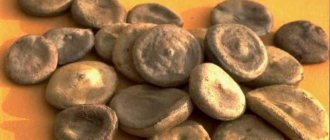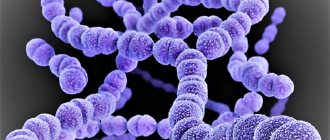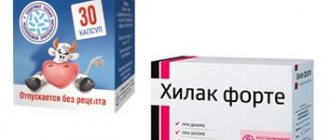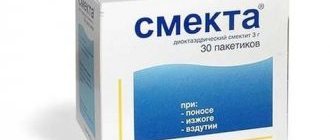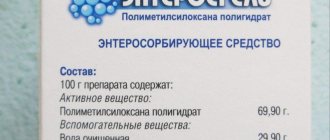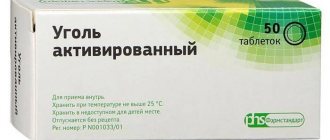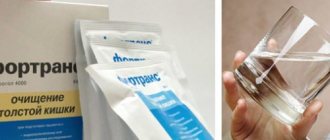Dichloroethane (DCE) is a colorless, volatile substance with a pungent odor, a chlorine-based organic compound. Sold in 30 ml glass bottles. It dissolves well in fat and alcohol and is part of household mixtures.
To prepare dichloroethane glue, 10% polystyrene or 2% plexiglass is added to EDC.
Dichloroethane, what is it?
This substance can be described as liquid, colorless and transparent. It also has a rather strong and specific odor, which seems a little sweet and reminiscent of chloroform. The solubility of this chemical in water is quite poor, but instead it creates an azeotropic mixture with water, in which the EDC content reaches 82.9%. Well, this substance will dissolve in organic liquids. Dichloroethane - what is it in terms of its use? This chemical composition itself can be a good solvent for a variety of fats or oils. It is also worth noting that the composition is quite aggressive towards materials such as plastic and rubber.
Precautionary measures
When working with EAF glue, the following precautions must be observed:
- The room where work is carried out must be well ventilated and have a working ventilation system.
- It is mandatory to use protective products for the skin and respiratory tract.
- If the composition gets on the skin epithelium, rinse with running water and wipe with alcohol. In case of contact with eyes, consult a doctor immediately.
- Mixtures and formulations are stored in residential premises in dark, dry places inaccessible to children. Pre-closed tightly. If the remaining composition does not require further use, then it is disposed of.
- When using solvents, work should be carried out away from open sources of fire.
- The containers in which the mixtures are mixed are practically not washed off from the dried composition.
We recommend watching the video:
General properties of ethylene chloride
Dichloroethane - what is it in terms of properties? This is a reagent that is toxic, flammable and explosive, and it evaporates quite quickly and easily. If you inhale this substance, it will cause a state of narcotic intoxication, as well as poisoning. In addition, the composition is considered a carcinogen and mutagen. For humans, the lethal dose of this substance is 20 ml if it is ingested through the mouth, skin or air. The chemical is hazardous to the environment and has a half-life of 50 years. Due to its high toxicity, the use of dichloroethane is quite limited. It is popular only in the chemical industry. Here it is used in many areas, since in addition to its toxicity, it also has a number of positive qualities. To obtain EDC, they resort to the chlorination of ethylene. The production of this substance is carried out in tens of millions of tons around the world.
Security measures
Both purchased and homemade gluing products are highly chemically reactive and harmful to human health.
To maintain your health, you should follow the safety rules:
- work in a well-ventilated area;
- when working with dichloroethane, use exhaust ventilation;
- Use protective gloves and safety glasses.
If the adhesive accidentally comes into contact with the skin or mucous membranes or is swallowed, consult a doctor immediately. Be sure to take a tube with you.
If you find an error, please select a piece of text and press Ctrl+Enter.
As they say, everything new is forgotten old.) In short, I learned about one chemistry, it’s called Dichloroethane. I bought it at a radio parts store. The seller said that this is a thing as old as the world, but everyone has forgotten about it, they buy moments and cosmophens with superglues at three prices, although these adhesives are based on EDC, just with additives.
What is it eaten with? In short, this liquid liquefies plastic, plexiglass, and even some rubber into mush, allowing you to get a casting after this liquid evaporates from the plastic. I found a use for it right away - I restored a broken piece of plastic on the lid of an electric saw. It turned out as if it was a monolith. Just like I did. I found plastic that EDC could handle, cut it finely and melted it in a bottle cap to jelly.
and poured it onto the lid of the electric saw, trying to give the shape of the piece that had previously broken off and was lost, the shape was supported by a piece of cotton rag (so that it could breathe and the GE would evaporate from the porridge through it). While the poured contents were solidifying (a thick layer for about a day), the JE, which was present in my plastic mess, flooded the part being restored and it all grew together and mixed into one whole.
The result was a monolith. I finalized the irregularities with a file after hardening and that’s it! Ready! I know for sure that I definitely would not have bought such a saw cover anywhere, because EDC helped me a lot! If I had known earlier, I would have been able to restore the torpedo on my former 99 - there is exactly the plastic that dissolves EDC with a bang. I also heard that you can weld car mats with it - I’ll check it out sometime. By the way, I also fused the sole on the shoe with a bang, it didn’t burst when walking. Well, maybe it will come in handy for someone... And this bottle costs only 35 rubles!))
Areas of application
This substance has found its application in such areas as chemical production, agriculture, household chemicals, military and construction industries, and the paint and varnish industry. And this is not a complete list of those areas of human activity in which this chemical reagent is quite widespread and actively used.
It is worth noting here that most of the total dichloroethane produced goes to the creation of vinyl chloride. It is quite often used as a basis for the manufacture of various types of polymer materials. The primary substance that is known throughout the world and is produced using EDC is polyvinyl chloride, better known as PVC. From this material, people have learned to create plastic windows, suspended ceilings, electrical insulating materials, leatherette, etc.
Notes
- Yu.S.
Musabekov. History of organic synthesis in Russia. - M.: Publishing House of the USSR Academy of Sciences, 1958. - P. 69. - 287 p. - ↑ 1 2 3 S.I.
Volfkovich. General chemical technology. - M.: Goskhimizdat, 1959. - T. 2. - P. 406. - 846 p. - ↑ 1 2 3 4 5 6 7 8 L.A.
Oshin. Industrial organochlorine products. - M.: Chemistry, 1978. - P. 100-110. — 656 p. - ↑ 1 2 V.L.
Gurvich. Selective solvents in oil refining. - M.: Gostoptekhizdat, 1953. - P. 249. - 321 p. - J. A. Field & R. Sierra-Alvarez (2004). "Biodegradability of chlorinated solvents and related chlorinated aliphatic compounds". Rev. Environ. Sci. Biotechnol. 3
: 185–254. DOI:10.1007/s11157-004-4733-8. - ↑ 1 2 3 F.F.
Muganlinsky, Yu.A. Treger, M.M. Lyushin. Chemistry and technology of organohalogen compounds. - M.: Chemistry, 1991. - P. 91-95. — 272 p. — ISBN 5-7245-0540-1. - ↑ 1 2 K. Eliss.
Chemistry of petroleum hydrocarbons and their derivatives. - M.: ONTI: Head. ed. chem. liters, 1936-1938. - pp. 511-514. — 634 p. - D.D.
Zykov. General chemical technology of organic substances. - M.: Chemistry, 1966. - P. 184. - 608 p. - [www.euro.who.int/__data/assets/pdf_file/0014/171221/e96640r.pdf Indicators based on biomonitoring of exposure to chemical pollutants]. Retrieved October 1, 2020.
- ↑ 12
[docs.cntd.ru/document/gost-1942-86 GOST 1942-86. 1,2-Dichloroethane technical. Specifications]. Retrieved October 1, 2020.
Other uses of ethylene dichloride
Ethylene dichloroethane is used to produce substances such as ethylene glycol, ethylenediamine, and polysulfide rubbers. If we talk about such an industry as the paint and varnish industry, then here it is widely used as the main reagent for the production of paint solvents. Agriculture also actively uses this composition as an insecticide for the treatment of grain crops, vineyards, soil, and grain storage. It is also actively used to control pests such as the Colorado potato beetle and several other types of insects.
If we talk about the construction industry, then here it is used as a solvent for plastic, rubber, fats, oils, wax, etc. Due to its properties, the substance is capable of not only dissolving, but also gluing plastic. Dichloroethane is used when working with facing materials used for building structures. It’s worth bringing some clarity here. Gluing any items related to kitchen utensils is strictly prohibited. The reagent can also be used in conjunction with an element such as plexiglass. Dichloroethane is used to repair parts made from this composition. It is capable of removing cracks and chips from the surface of these elements.
Links
Alkenes and alkynes Vinyl chloride • Vinylidene chloride • Trichlorethylene • Tetrachlorethylene • Allyl chloride • Chloroacetylene • Dichloroacetylene • Chloroprene Alcohols, ketones, aldehydes Ethylene chlorohydrin • Chloral • Chloral hydrate • Hexachloroacetone • Epichlorohydrin Acids and anhydrides Monochloroacetic acid • Dichloroacetic acid • Trichloroacetic acid • Acetyl chloride • Carboxylic acid chlorides Aromatic compounds Benzyl chloride • Chlorobenzene • Polychlorinated biphenyls • Hexachlorobenzene • Chloroacetophenone • Benzoyl chloride • Benzotrichloride • DDT (insecticide) • Dioxins Organoelement compounds (,,,) Chloropicrin • Mustard gas • Chlorophos • Lewisite High molecular weight compounds Polyvinyl chloride • Polyvinylidene chloride • Chloroprene rubber This article is one of the good articles in the Russian section of Wikipedia.
Bonding with dichloroethane
It is important to understand that there are currently a large number of different adhesives available. The reason for this was that the same composition cannot effectively glue, for example, wood and plastic. The adhesive base must somehow compensate for the difference between two elements of different composition. For plastic and other polymer products, this base is EDC.
The reason for the demand for this composition is that plastic itself, plastic, etc., are quite fragile substances, and therefore glue is almost always used to repair them at home. But there are many nuances that must be taken into account.
The best way to glue plexiglass
Both for repairing broken ones and for assembling new products, you should use suitable glue.
How to glue plexiglass:
There are two types of specialized compounds for gluing plexiglass:
- Compositions based on acrylic fillers and strong organic solvents. In composition they are very close to the plexiglass substance, which makes it possible to obtain a homogeneous and sufficiently strong connection.
- Adhesives based on epoxy resins are excellent for filling and repairing cracks; the joint takes a long time to harden, but epoxy can glue tightly.
In addition, plexiglass can be dissolved, which means it can be glued together with strong acids:
It will not be possible to glue plexiglass with food grade vinegar (acetic acid with a concentration of 7-9%), you will need at least 70% vinegar essence. Acetic acid does not dissolve the surface layer of the material, but only softens it, so the parts will have to be compressed tightly and held for a long time.
Features of work
It should be said right away that gluing plastic is very difficult. It is much easier to connect materials such as ceramics, metal or even glass using an adhesive mixture. The whole problem with polymer substances when gluing them is that they have a fairly high chemical inertness. In other words, such materials simply do not form bonds. Because of this, to glue polymers you need to have a special composition. In addition, for each group of such substances it is necessary to use a different adhesive composition. For example, dichloroethane cannot be used to glue polyethylene together.
In general, all adhesives are divided into two groups: liquid with a water base and liquid with a solvent base. The principle of operation of solvent adhesive is that after its application, the solvent base completely evaporates, and the remaining elements harden, connecting the material. However, only porous raw materials can be glued in this way; using it for a sealed base is completely useless.
Treatment in hospital
The antidote for dichloroethane poisoning is “Acetylcysteine” - you need to inject 100 ml of a 5% solution into the body. You can also give the victim rheopolyglucin and a glucose solution with insulin.
In the hospital, after the administration of the antidote, treatment is only symptomatic. How do they help the victim?
- Provide oxygen inhalation.
- Plasma-substituting solutions are administered.
- Unithiol, lipoic acid and cytochrome are used, vitamins B and E are prescribed.
- If necessary, connect to an artificial kidney machine.
How is dichloroethane removed from the body? - the lungs, kidneys and intestines convert it into final products.
Dichloroethane poisoning most often occurs due to negligence. Symptoms of the disease are sometimes mild or hidden, making diagnosis difficult. Therefore, at the first signs of its use or entry into the body, you should immediately seek help from specialists.
EDC for plastics
By itself, this chemical reagent bears very little resemblance to an adhesive composition. It has a pungent odor, is volatile, and also easily dissolves in alcohol or fats. Small containers containing EDC are commercially available. Volume 30 ml. Since the composition itself is aggressive and dissolves plastic, it is necessary to properly prepare the adhesive composition.
To prepare glue, you need to dissolve a certain amount of polymer substance in liquid. Most often it is about 2% plexiglass or 20% polystyrene. In order to further reduce the aggressiveness of the composition with a dichloroethane base, it is necessary to dissolve in it a little of the material that you plan to glue.
Symptoms of poisoning
When dichloroethane enters the body through the digestive system, it is quickly absorbed in the stomach in the first 3–4 hours. Alcohol and fatty foods speed up this process. After 6–8 hours, 70% of the toxic substance is found in tissues and internal organs rich in fats:
- liver;
- brain;
- adrenal glands;
- fat layer of the abdominal cavity.
In the liver, dichloroethane is converted to chloroethanol (another equally toxic substance).
Symptoms of inhalation poisoning
Dichloroethane vapor poisoning occurs when the substances are inhaled or come into contact with the skin. Signs appear after several hours and are not always recognized in a timely manner.
- When the poison gets on the skin, local redness and swelling occurs in areas of the body, which subsequently leads to the development of dermatitis.
- When ethylene chloride is inhaled into the body, symptoms occur at the end of the first or on the second day and more often resemble a mild course of a viral infection - general malaise, weakness, runny nose, lacrimation, headache and dizziness occur, body temperature rises to 39 ºC.
- In severe cases, a state of stunning occurs, which ends in coma.
- There is paralysis of the respiratory center and various types of heart rhythm disturbances.
- After three days of relative well-being (with a mild course), symptoms of disruption of the digestive system appear - nausea, vomiting, loose stools, abdominal pain and enlarged liver.
- In case of inhalation poisoning with dichloroethane, jaundice develops and the amount of urine excreted by the kidneys decreases.
Symptoms of oral poisoning
What happens if you drink dichloroethane? The first mild manifestations of poisoning occur just a few minutes after consuming the chemical compound.
- Nausea and repeated vomiting mixed with blood occur.
- Pain appears in the stomach, release of a large amount of saliva, and severe weakness.
- A person is worried about loose stool - it is liquid, flaky, with the smell of ethylene chloride.
- In the clinical picture of dichloroethane poisoning, the leading symptoms are agitation, a sweet taste in the mouth, convulsions and severe cramping pain in the abdomen.
- Numerous nasal and gastric bleeding and bleeding from the injection sites occur.
- The heartbeat quickens, extrasystoles and other heart rhythm disturbances appear.
- Already on the first day after dichloroethane intoxication, 60–80% of victims develop shock.
- Approximately on the fifth day of acute poisoning, an enlarged liver and its sharp pain upon examination, yellowing of the skin and sclera, and kidney damage are noted.
The most severe symptoms are experienced by young children, patients with diabetes, and people with chronic liver and kidney diseases. If poison is taken in large quantities, death can occur from paralysis of the respiratory muscles in the first hours.
In chronic alcoholics, some of the symptoms of dichloroethane poisoning are convulsions, agitation, alcohol withdrawal syndrome, and muscle twitching.
Gluing instructions
In principle, the use of this gluing composition is quite simple:
- First you need to dissolve a small proportion of plastic in the amount of glue that you plan to use.
- The surface to be glued must be degreased with acetone.
- The composition must be applied directly to the seam. The material must not be allowed to come into contact with a normal surface, otherwise it will corrode it.
- After the glue gets into the seam, the edges are pulled together and held in this position for 1 to 6 hours.
Since this composition evaporates too quickly and is toxic, it can only be used in a room that has good ventilation. Also, the room must be free of any sources of fire or heat to avoid a fire.
Useful tips
- The adhesive seam should not be exposed to water, since moisture causes it to lose its strength and the glued surfaces may move or peel off.
- The glue takes a long time to dry, so the user has a lot of time to correct the position of the parts to be joined. There is also no need to delay making adjustments; there is a possibility of a decrease in the quality of the connection due to repeated actions with the seam.
- The surface is lubricated with the solution with the utmost care, since it can corrode materials, spoiling the appearance of parts accidentally exposed to it.
- When squeezing surfaces after gluing, you must make sure that the seam meets along its entire length. It will be more reliable if you fix the glued elements until the solution has completely hardened.
- Since dichloroethane evaporates quickly, it is stored in chemical containers. The container must be tightly closed to prevent the substance from evaporating or accidentally spilling. It is better to use jars of acetone, which is twice as volatile as dichloroethane.
- For household use, it is better to buy bottles with a volume of no more than 50 ml. Containers of this volume are more stable and even with careless handling will lead to a slight spill of the substance.
How to cook
To make dichloroethane glue, dissolve the same material you want to glue in EDC. This will reduce the aggressiveness of the substance and at the same time increase the strength of the connection. When polymer is added, joint shrinkage is reduced since EDC does not evaporate as rapidly.
Cooking instructions:
- Take a small container with an airtight lid.
- Place shavings and small pieces of plastic in a container.
- Pour EDC on top until it completely covers the pieces.
- Close the lid as tightly as possible and place the container in a dark place until the polymer is completely dissolved, after which the mixture is ready for use.
Precautionary measures
To ensure safety when using adhesives containing dichloroethane, standard precautions must be followed. The working mixture can only be stored in glass or polyethylene bottles, since the substance dissolves all other types of plastic
The liquid can also corrode many other materials, so spills should be avoided.
When working with glue, it is recommended to wear protective gloves, a respirator and long sleeves to protect the skin. Taking into account all the listed restrictions and the toxicity of the substance, its use is allowed only for production purposes.
Adhesive self-adhesive films
Self-adhesive films can be a good alternative for repairing plexiglass products. Their undoubted advantage is the ability to glue both two plexiglass parts, and plexiglass with other materials.
There are three main types of such films on the market:
- Baseless adhesive films. In fact, it is a thin layer of adhesive several tens of microns thick. It is stored between two transport polyethylene films, which are removed immediately before gluing. Such adhesive films can bond smooth, perfectly flat parts with a low coefficient of thermal expansion.
- Films having a thin transparent base, a few hundredths of a millimeter thick. Also requires a smooth surface, but the requirements are somewhat lower. The connection turns out to be less strong and theoretically detachable - you can try to remove the film.
- Films with a thin foam base, similar to the so-called double-sided tape. The thickness of the base ranges from tenths to several millimeters. Such films can be used to glue plexiglass, even if the surfaces are not very smooth, but the strength of the connection is very low. Suitable for structures that do not experience heavy loads.
Requirements for surface preparation and maximum loads that the joint can withstand are specified in the instructions supplied with the specific film.
Adhesive options for plexiglass
Speaking about popular compounds that can be used to glue plexiglass, it is worth focusing on the following:
- compositions of the Acrifix family, specially developed for acrylic-based materials;
- mixtures based on dichloroethane;
- acetic acid and its essence;
- compositions of the Colacril family;
- Cosmofen glue. It is also used to fasten wood and plexiglass;
- adhesives produced by Era-Henkel: Moment, Moment - seconds and others.
Acrifix 117 glue
One of the most popular compositions for gluing plexiglass has a long-standing and well-deserved popularity among home craftsmen.
It has the following advantages:
- excellent connection strength;
- high transparency of suture material;
- short setting time;
- low toxicity, especially compared to dichloroethane;
- high penetrating power makes strong squeezing of parts unnecessary.
Unfortunately, Acrifix 117 also has disadvantages that make it difficult for home craftsmen to access:
- packaging in liter jars;
- high price.
Experts recommend adding one tenth of the volumetric part of Acrifix 116 to Acrifix 117. This helps to better fill micro-irregularities and increase adhesion.
Acrifix 116 glue
The composition is close to grade 117, but differs in greater thickness and viscosity. It is packaged in convenient 100 ml tubes, which makes it easy to use in home workshops.
It can be used to glue rough surfaces that are not perfectly smooth.
Dichloroethane
Budget replacement for expensive formulations. Sold in chemical components stores and radio parts stores. If the surfaces are perfectly smooth and even, dichloroethane can be used to glue them together without any additives. Apply it using a medical syringe into the gap between the parts to be joined. The seam is perfectly smooth and highly transparent. If you properly prepare the surfaces, the seam will be free of bubbles.
If the surfaces are not perfectly smooth, then there is another way to glue them. A little plexiglass shavings (sawdust) is poured into a bottle of dichloroethane; after dissolution, a thick composition is obtained that can be applied with a spatula or wire.
In the room where they work with dichloroethane, it is necessary to have high-quality ventilation.
Vinegar essence
This is another inexpensive substitute for purchased professional compounds. Allows you to glue plexiglass quite firmly.
Serious internal mechanical stresses arise at the bends of the parts, which can lead to cracking of the plexiglass.
Experts recommend using vinegar essence to glue small products that are not subject to heavy loads.
Glue colacril 20 and colacril 30
The Colacril family serves as a functional replacement for the expensive Acrifix family of adhesives.
Colacril 20 is highly fluid, while Colacril 30 is viscous.
Experts mix them to obtain the optimal consistency for each specific compound.
The compositions allow you to glue parts and get a beautiful and even seam, transparent and without bubbles.
The disadvantage of the Colacril family compared to Acrifix is the formation of small cracks at the bend of plexiglass, caused by internal mechanical stresses. At the same time, the appearance deteriorates, but the strength is maintained.
Secondary glue moment and Cosmofen
Most second adhesives are based on cyanoacrylate. Regardless of the type of packaging - in metal, plastic tubes or bottles with a narrow spout for application - they are very similar in their properties.
A common property is that they do not dissolve plexiglass, but create an intermediate adhesive layer.
Therefore, experts do not recommend using them for connections subject to any loads. The most they can do is grab a small part for a toy or decoration.
The adhesive layer is opaque, the joint is very noticeable.
Dangerous! “Moment” can glue the skin of your fingers so much that you will have to see a doctor. The use of protective gloves is mandatory.
Types of adhesives for plexiglass
Adhesives are primarily distinguished by their basic characteristics and can be used only for gluing plexiglass or creating strong connections with other materials. Also important factors when choosing an adhesive should be the relatively safe composition and price of the product. To save money, you can use improvised means like vinegar or give preference to specialized adhesives.
Solvents
Using solvents, you can connect plexiglass together, but such a seam will most likely turn out to be fragile and subsequently a crack may occur. For a better connection, it is recommended to dissolve plexiglass shavings in the selected liquid, after which the hardened seam will be more durable. Acid, such as formic or acetic acid, is most often used as a solvent.
It is not recommended to use acetone containing products as a solvent or an additive to it; the dissolution time in such plexiglass compositions is about 10 hours, with regular stirring of the mixture.
Dichloroethane
Using this product is one of the most budget-friendly options; you can buy it at any store that sells chemical components.
If it is necessary to glue smooth surfaces, then dichloroethane can be used as an independent adhesive, the seam will be quite transparent and perfectly smooth. With proper preparation of materials, the seam does not contain bubbles, but if they appear, it means that the technology was violated when processing the parts.
When working with dichloroethane, be sure to take all precautions, as this substance is hazardous to health. When storing it, ensure that it is stored in a tightly sealed container.
Epoxy resin
The use of epoxy resin or glue containing it ensures instant, tight gluing, while guaranteeing a transparent seam at the joint when drying. Epoxy resin is transparent on its own, which makes for interesting combinations, especially when used with wood.
Adhesive film
In order to glue two pieces of plexiglass together, a self-adhesive adhesive film is ideal, providing a strong connection.
In contrast to the goals pursued, it is necessary to choose one of the three most popular options for such film:
- Baseless adhesive film. The choice of this option will be especially relevant if the task is to maintain the transparency of a plexiglass product. It is recommended to apply the film on as smooth a surface as possible.
- Film with a thin transparent base. A distinctive feature of this type of film can be considered the possibility of its subsequent removal. It is applied to the flat surface of two plexiglass elements or to connect plexiglass with other materials.
- Film with a thin foam base. This option vaguely resembles thick double-sided tape; with the help of such a film, even uneven surfaces can be glued, but the connection may be of poor quality; this method is suitable for structures that do not involve further heavy loads.
You should pay attention to the composition of each type of adhesive films, especially the indication of the optimal load that they can withstand, as well as the recommended service life
